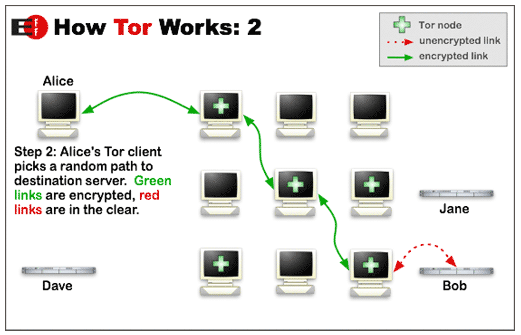Even Captcha can be a evidence to identify the culprit
According to court documents, Dread Pirate Roberts was identified because a CAPTCHA service used on the Silk Road login page leaked the users' true location.When the FBI took down the online black market and drug bazaar known as the Silk Road, privacy activists and security experts have traded conspiracy theories about how the U.S. government managed to discover the geographic location of the Silk Road Web servers. Those systems were supposed to be obscured behind the anonymity service Tor, but as court documents released Friday explain, that wasn’t entirely true: Turns out, the login page for the Silk Road employed an anti-abuse CAPTCHA service that pulled content from the open Internet, thus leaking the site’s true location.

Tor helps users disguise their identity by bouncing their traffic between different Tor servers, and by encrypting that traffic at every hop along the way. The Silk Road, like many sites that host illicit activity, relied on a feature of Tor known as “hidden services.” This feature allows anyone to offer a Web server without revealing the true Internet address to the site’s users.
That is, if you do it correctly, which involves making sure you aren’t mixing content from the regular open Internet into the fabric of a site protected by Tor. But according to federal investigators, Ross W. Ulbricht — a.k.a. the “Dread Pirate Roberts,”
the 30-year-old arrested last year and charged with running the Silk Road — made this exact mistake.
As explained in the Tor how-to, in order for the Internet address of a computer to be fully hidden on Tor, the applications running on the computer must be properly configured for that purpose. Otherwise, the computer’s true Internet address may “leak” through the traffic sent from the computer.

And this is how the feds say they located the Silk Road servers:
“The IP address leak we discovered came from the Silk Road user login interface. Upon examining the individual packets of data being sent back from the website, we noticed that the headers of some of the packets reflected a certain IP address not associated with any known Tor node as the source of the packets. This IP address (the “Subject IP Address”) was the only non-Tor source IP address reflected in the traffic we examined.”For many Tor fans and advocates, The Dread Pirate Roberts’ goof will no doubt be labeled a noob mistake — and perhaps it was. But as I’ve said time and again, staying anonymous online is hard work, even for those of us who are relatively experienced at it. It’s so difficult, in fact, that even hardened cybercrooks eventually slip up in important and often fateful ways (that is, if someone or something was around at the time to keep a record of it).
“The Subject IP Address caught our attention because, if a hidden service is properly configured to work on Tor, the source IP address of traffic sent from the hidden service should appear as the IP address of a Tor node, as opposed to the true IP address of the hidden service, which Tor is designed to conceal. When I typed the Subject IP Address into an ordinary (non-Tor) web browser, a part of the Silk Road login screen (the CAPTCHA prompt) appeared. Based on my training and experience, this indicated that the Subject IP Address was the IP address of the SR Server, and that it was ‘leaking’ from the SR Server because the computer code underlying the login interface was not properly configured at the time to work on Tor.”
A copy of the government’s declaration on how it located the Silk Road servers is here (PDF). A hat tip to Nicholas Weaver for the heads up about this filing.

A snapshop of offerings on the Silk Road.
No comments:
Post a Comment
Note: Only a member of this blog may post a comment.